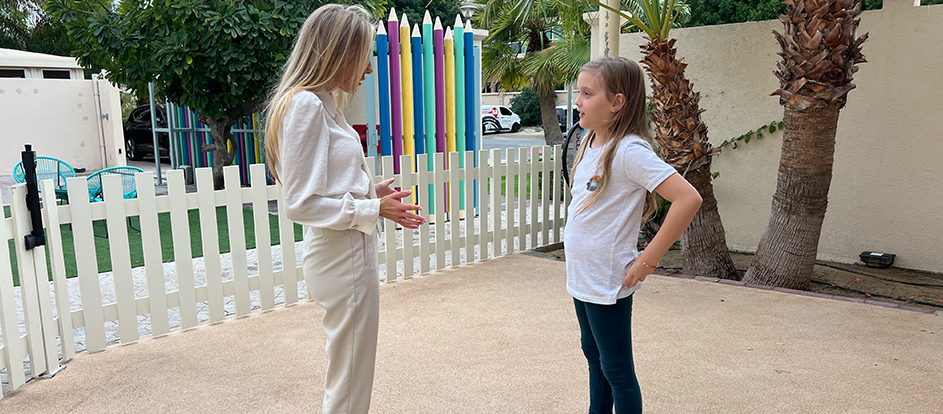Many parents struggle in finding the right balance to set boundaries for their child, while also giving their child the freedom to express themselves through their actions. This balancing act can be even more challenging for parents of children with additional needs. As an occupational therapist with a background in psychology and behaviour analysis, I frequently have these conversations with parents whereby they often question ‘When and how can I say no to my child?’
Here are some of my simple strategies which can make setting boundaries easy and fair for everyone.
Tell your child what to do, instead of what not to do!
Firstly, I recommend that you start becoming more aware of the language that you are using. Often, we say “no” when we really mean “don’t”. For example, we might say “no jumping on the couch” when we are really trying to instruct “do not jump on the couch.” Here, you can simply change your instruction. Tell your child what to do, instead of what not to do. You can say “sit nicely on the couch” or “let’s jump on the mat.” This strategy will be more effective if you give a more appealing alternative instruction. Children with communication difficulties benefit from the use of short concise instructions.
Choose To and Have To
Explain to your child that there are ‘choose tos and ‘have tos’. This means there are somethings that we can choose to do and somethings that we have to do. For example, sitting at the table in the restaurant is a ‘have to’ but you can ‘choose to’ do some colouring or play a game on the iPad while you wait for your food. Try to emphasise to your child all the choices that you are giving them daily to help them feel that they have autonomy and control in many aspects of their environment. If your child has difficulty understanding abstract concepts, you can create a social story to explain the difference. You could also include lots of pictures and examples of both.
Explain & Provide a Compromise
If your child requests to do something in which you are unable to say yes to, instead of simply saying no, make sure to provide a reason for why you are saying no and offer a compromise. For example, “We are unable to go to the playground now as we must get home in time for dinner, however after dinner we can go out for a walk and you can bring your scooter.” Avoid making false promises and always follow through even if you think your child has forgotten. By following through every time, your child will learn to trust your word and will feel more comfortable giving up an immediate treat and waiting for the proposed treat later. If your child has communication difficulties, you can use a visual schedule to show that you are adding a favourable activity to their schedule. You can use the “first, then” method which is a simple and effective way to engage children in less motivating activities. An example is “first dinner, then scooter.”
Choose Your Battles Wisely
Some days it can be more difficult than others to not give your child what they want. This may be because you know your child has not slept well or you, yourself, had a stressful day. On these days, I’d recommend choosing your battles wisely. You can give your child more leeway while also maintaining boundaries. You can do this by asking yourself if you have the energy/time to follow through and manage your child’s reaction to a ‘negative’ response. If you feel that you are likely to give in to what they are asking for, if your child was to persist, then it is much better to say ‘yes’ on the first request, rather than “no, no, no, then yes”. A consistent parenting approach will help your child to develop stronger self-regulation skills.
It is important to know that while you are setting boundaries you can still provide your child with lots of nurturing attention and affection. You can recognise their feelings, empathise with them and support them to find comfort. For example “I know that you feel sad that we can’t go to the playground right now. I would like to go too, but I am excited for our walk on the scooters later.”
Remember that parenting is a constant work in progress that will always provide you with new challenges as your child grows and develops. However, by having a few simple strategies and basic principles which you can rely on in your parenting toolbox, it will leave you better equipped to handle new challenges as they arise.




